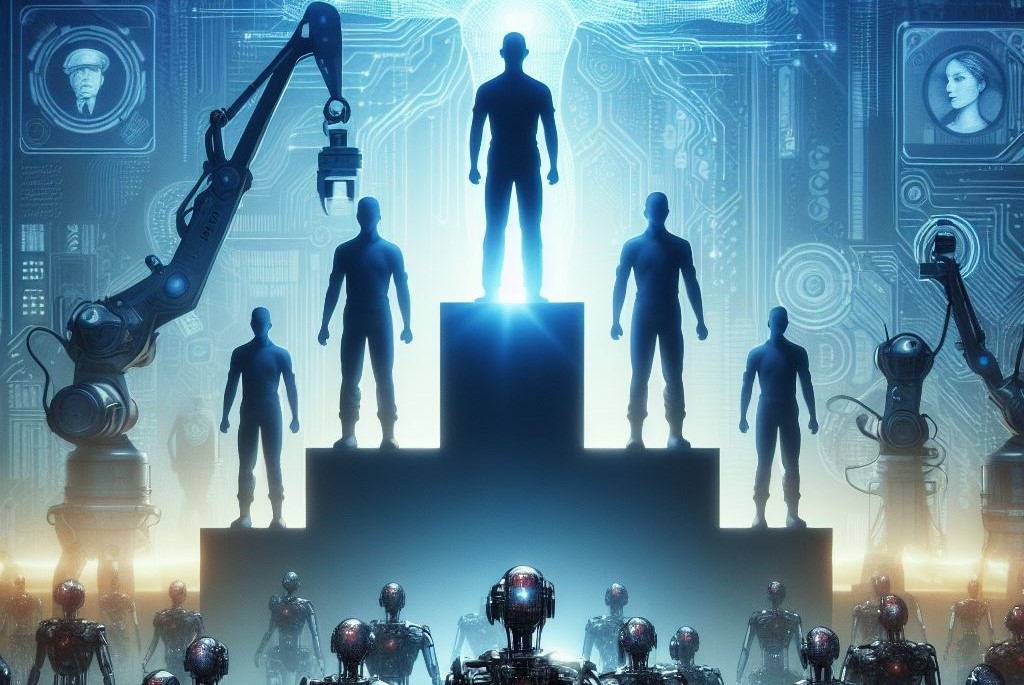Prioritize people above robots, In a thought-scary exchange between British Prime Minister Rishi Sunak and Elon Musk, the capability ramifications of synthetic intelligence (AI) on employment had been added to the leading edge. Musk’s declaration that AI may want to in the end render human exertions out of date increases vital questions about the evolving dynamics between capital and exertions in national economies.
Challenges to Traditional Economic Assumptions
Traditionally, economists like Nicholas Kaldor believed within the fixed nature of the department of country wide income between capital and labor. However, recent research on international profits styles indicates in any other case, indicating a wonderful decline in labor’s share of country wide profits across many countries.
The Decline of Labor’s Share
In the United States, this decline has been in particular stark, a phenomenon dubbed “the tremendous slide.” This decline is characterised by means of a widespread increase in earnings for US-indexed organizations, while labor profits stagnates. Between 1997 and 2019, profits almost doubled, at the same time as wages and advantages did not keep tempo, main to a incredible decrease in hard work’s percentage of enterprise sales.
Prioritize people above Robots, Addressing the Impact of Automation
The rise of automation and AI technology poses substantial demanding situations to the traditional courting between exertions and capital. As generation maintains to develop, there’s a growing situation that automation can also further exacerbate earnings inequality and displace people from their jobs.
The Role of Policymakers
In mild of these challenges, policymakers ought to take proactive measures to mitigate the ability damaging results of automation on earning. By prioritizing policies that prioritize job introduction, assist people’ rights, and foster financial inclusivity, governments can assist make certain that the benefits of technological development are equitably allotted.
Impact of Technological Advancement on Labor Share
The declining percentage of country wide profits going to exertions is a global situation, contributing to elevated inequality and socioeconomic instability. In america, profits inequality has reached its maximum degree in 4 a long time, main to social unrest and heightened electoral polarization.
Drivers of Declining Labor Share
Several elements make a contribution to this trend, consisting of globalization, the growing market dominance of large agencies, and technological improvements allowing the automation of jobs. While every aspect plays a position, evidence indicates that the considerable adoption of automation is the primary motive force of hard work displacement and declining earnings proportion.
Evidence from Data Analysis
Analyzing full-size data from Orbis, which encompasses both public and private organizations, exhibits a considerable correlation between improved research and improvement spending and reduced labor percentage in companies. Research conducted with the aid of Acemoglu and Restrepo at MIT shows that each additional robot in the US personnel displaces about 3.Three workers, in addition exacerbating the difficulty.
Impact on Inequality and Employment
Automation disproportionately influences workers in routine responsibilities, especially in sectors like manufacturing, wherein exertions’s percentage has skilled huge declines. However, positive industries, which includes finance, have visible an boom in exertions’s percentage.
Proposed Solutions
Economists propose numerous solutions to mitigate the unfavourable results of automation on labor proportion. Some suggest for widely wide-spread primary earnings as a way of imparting monetary stability to displaced workers. Others advise implementing policies that incentivize human exertions over excessive automation, emphasizing the significance of human adaptability in using new technologies.
Impact of Business Decisions on Labor Share
According to analyze by using Acemoglu and his co-authors, the decline in labor proportion in international locations just like the US and Denmark may be partly attributed to agencies hiring MBA graduates to cut prices and downsize workforces. However, blaming MBAs for this trend is like blaming a health practitioner for a affected person’s contamination; corporations hotel to such measures because of excessive opposition and the need for strategic guidance.
Policy Recommendations for Job Creation
Policymakers should reevaluate tax and subsidy incentives to encourage agencies to prioritize process creation over capital investments. Currently, tax advantages want capital investments, while payroll taxes discourage hiring. Shifting incentives to invest in human capital rather than machines may want to foster activity boom and financial resilience.
We Recommend The Significance of AI and the Need for Public Investments
Investing in Education and Social Safety Nets
Promoting low priced higher training, consisting of via public universities like Berkeley, can help individuals adapt to automation by supplying them with abilities which might be much less prone to displacement. Strengthening social safety nets can save you the adoption of protectionist measures like tariffs, which are useless in addressing the foundation causes of declining exertions shares pushed by using technological improvements.
People-Centric Business Leadership
Business faculties play a vital position in shaping future leaders who prioritize the properly-being of all stakeholders, not simply shareholders. Emphasizing a holistic method to choice-making that considers the interests of personnel, clients, and society at massive is crucial for sustainable commercial enterprise practices.
Conclusion
To address the demanding situations posed by automation and declining exertions stocks, a comprehensive approach that prioritizes process introduction, schooling, and social aid is necessary. By reorienting incentives, making an investment in human capital, and fostering humans-centric management, policymakers and enterprise leaders can navigate the changing landscape of work with resilience and inclusivity.

